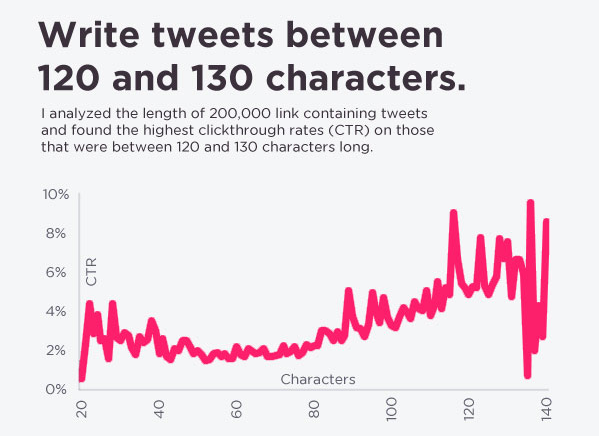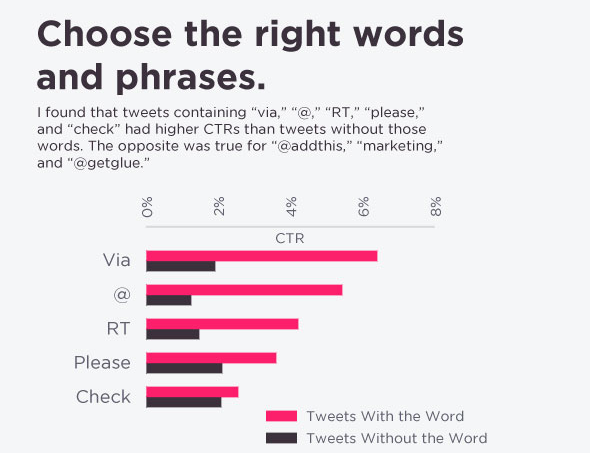‘Short is Sweet’ and other tales of best copy practice in social media
Are you sitting comfortably? Then I’ll begin.
Short is Sweet.
In a not-so-distant land, in a time not so different from our own, the overwhelming message from the oracles of social media best practice is this: size matters. Words are free and infinitely available, but page space, characters and your readers’ time are all at a premium. The shorter the post, the faster a reader can process it in full.
Optimising the copy element of a social media post can make all the difference to its readability. This is particularly pertinent if you are posting a mixture of text, links, images and video. A post whose copy is easy to digest will facilitate quick sharing decisions, which in an ideal world will get your content out to more people, faster. At the same time, posts that are too short can be unsatisfactory to read or just seem inconsequential. This is with the exception of interactions, which are a different animal, and possibly campaign-specific posts, too. More on those later.

A good golden rule, especially with channels where characters are limited, is to say everything you need to say, whilst leaving a small part of the overall allowance free. This way, there is space left over for a sharer to comment or mention others without having to delete any of your carefully chosen words.
Multiple Platforms, Multiple Personalities?
It’s probably best to tackle these individually, though they come hand in hand.
Many of us are managing multiple social media accounts, each with a different selection of followers, different rules of etiquette, and unique idiosyncrasies. Do not be tempted to copy and paste through six different channels! The differences between the various platforms are the very things that extend your reach to a diverse range of users and potential sharers. Consider how different tones of voice come across on different platforms, as well as different targeted lists or groups of readers, and adjust accordingly. Facebook business pages are often friendly and upbeat, perhaps here you can bemoan Monday morning or celebrate Friday. LinkedIn forms a distinct contrast: it generally demands more formality and industry relevance.
This is not to say that you entirely at the mercy of the trends of each medium. The short answer to the question in the heading is no! Accounts shouldn’t express multiple personalities, but should compliment each other without outright duplication. They are components of a whole, the online presence of a single user or entity. With continuity established, it is possible to break away and get readers’ attention through specific campaigns. They stand out precisely because the tone departs from what your audience is used to. In all that excitement, do not forget to stay consistent across all platforms in the use of person and plurals.

(Don’t) Talk to me Dirty (or for Too Long, or Without Proper Credits, or In Riddles)
Twitter invites potential users to ‘join the conversation’, which illustrates perfectly the difference between a social media profile (open dialogue) and an ad purchase (closed monologue). Our SSM Kasia will tell you that interactions can be the most valuable, and indeed the most fun element of social media usage; so long everyone is sensible about choosing their words. Speaking on behalf of a company, or in a professional capacity, you obviously have to maintain a professional manner. I don’t mean all communications must be strictly dry and humourless; I simply exhort you to use your common sense (and no giant lists of hashtags, inappropriate diminutives, slang, or expletives).
Further to this, interactions are, within reason, an exception to the goldilocks-style length conditions I set up in the first part of this post. Once involved in a conversation, be pragmatic. Answer any queries concisely, or direct the other party towards another medium, such as email or direct messaging, where you can discuss things at greater length, if exchanges start to fill up the feed.
Sharing content that you have enjoyed or that you think your followers might appreciate is great! But to make it work as hard as possible, it’s important to credit your sources properly. Again, common sense plays a part here. You needn’t use up your quota or exceed optimum post length by mentioning a huge chain of other sharers. It only takes a few seconds and a few characters to add ‘Via’ here or ‘RT’ there. It lets your source know you liked their content enough to share it, and gives them an opportunity to express appreciation. Proper credits aren’t just courteous nods to sources. When attached to good content, they can boost the activity surrounding your post, and extend your reach even further. All with just a few extra letters!
Finally: be clear, and don’t over complicate things. If posting to an international audience, be aware of idioms and turns of phrase that could translate badly or not at all. Insert links in easy-to-click places (i.e. not right at the end of a long post) so that your readers get to the content they are after quickly. Steer clear of the passive voice, too. It’s not normally essential, it almost always increases word-count, and it sounds a bit stuffy.
Heed the morals of these copy tales, and we shall all post, tumbl, tweet, link and pin happily ever after.
The End…
… But if you’d like to do some more reading, I recommend the this Slideshare from a presentation at INBOUND 2013, and the original source of the above info graphics, a detailed post about boosting clicks on Twitter
Written by Chloe Marshall
About markmaking*
markmaking*
mark-making* is an award-winning creative agency specialising in branding, campaigns and communications